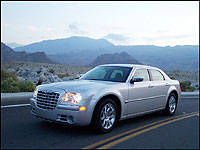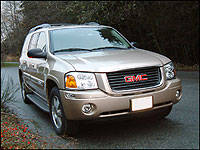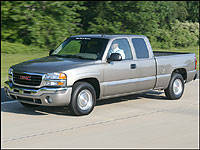Three Automakers Lead in Cylinder Deactivation DevelopmentWith fuel prices on the rise again, no doubt many drivers are mulling over whether to trade in their larger car or SUV for something more economical. And while such a
 |
| Chrysler's HEMI-powered 300C and its Dodge Magnum R/T sibling were the first cars to feature a modern-day cylinder activation system. (Photo: Trevor Hofmann, Canadian Auto Press) |
thought might result in fewer dollars spent at the pump, as well as a greener environment, the reality of living without the size advantages of a mid- to full-size vehicle, as well as the lack of on-demand power that would result with the drop in engine displacement, would be a difficult step for some to take.
What are the options? Well, there are hybrids, which are complicated for sure, and often fairly expensive when compared to their conventionally powered counterparts, but for a growing number of consumers, certainly worth the upgrade. And what about opting for diesel? Only a small number of automakers sell diesel-powered vehicles, but again, despite a price premium,
 |
| Cadillac's 1981 Seville was the first car to feature cylinder deactivation. (General Motors of Canada) |
it's something worth looking into. There's another, slightly less drastic approach to reducing fuel consumption, mind you, and it doesn't require a hefty cost of entry: cylinder deactivation.
Cylinder deactivation is one of those "have your cake and eat it too" technologies, which is probably why it is starting to catch on. First introduced by General Motors through its Cadillac division in the early '80s, it experienced dismal results. While innovative for the era, the V8-6-4 engine delivered poor
 |
| DoD was introduced as standard equipment with 5.3-litre V8-powered 2005 model year Chevrolet TrailBlazer EXTs, GMC Envoy XLs and Envoy XUVs. (Photo: Rob Rothwell, Canadian Auto Press) |
reliability due to low-tech electronics. Modern technology, in comparison, allows trustworthy operation of similarly conceived cylinder deactivation systems.
More recently, GM announced its Displacement on Demand (DoD) system first, since renamed Active Fuel Management (AFM), but it was Chrysler that trumped the General by delivering the first cylinder deactivation system to be sold in North America on large-volume vehicles, with the introduction of the award-winning 5.7-litre HEMI-powered 300C in 2004. Chrysler Group's Multi-Displacement System (MDS), is said to increase fuel economy by up to 20 percent during light engine loads, while
 |
GM's pickup truck line was the first to get its DoD cylinder deactivation system. (General Motors of Canada)
|
still delivering all of the power and torque normally associated with a V8 when needed.
Following Chrysler's 300C, and other models that use its MDS-equipped HEMI engine, GM introduced DoD to its full-size pickup truck lineup, and has followed this move by integrating AFM cylinder deactivation into a variety of V8-powered cars and SUVs.
Along the way, Honda introduced its own cylinder deactivation system, dubbed Variable Cylinder Management (VCM), first available on its Accord Hybrid, and then later applied to conventionally-powered versions of other models incorporating its 3.5-litre V6. Now, with three automakers producing variations on the same theme, it appears to be a viable fuel saving solution that's not only here to stay, but should soon be adopted by rival brands.






